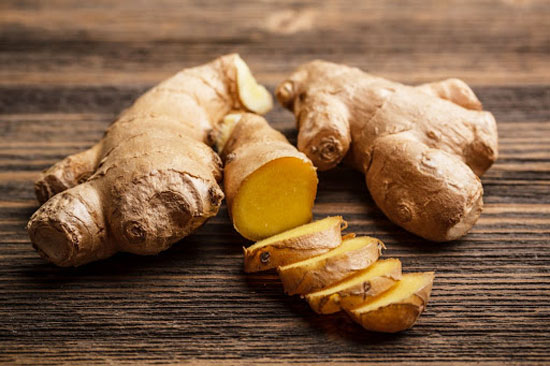Natural antibiotic: Research looks at potential of ginger against superbugs
Ginger is a well-known spice often used in Asian cuisine, especially in Indian, Thai, and Chinese cooking. Also known by its scientific name Zingiber officinale, ginger belongs to the same family as other medicinal spices like cardamom and turmeric.

In traditional medicine, the root of the ginger plant is used to alleviate digestive problems, relieve nausea and motion sickness, and treat colds and arthritis. But a study reveals that that’s not all ginger can do.
In an article published in the Journal of Medicinal Plants Research, researchers from the Botswana International University of Science and Technology described the antimicrobial potential of ginger root extracts. They reported that the phytochemicals present in the root of this multi-purpose plant could be used to treat hospital-acquired bacterial infections.
What are nosocomial infections?
Pathogenic microorganisms abound in the environment, especially in hospitals where people with different kinds of sicknesses congregate. Nosocomial infections are caused by disease-causing bacteria or fungi that prey on people with compromised or weakened immune systems.
One common feature of these hospital-acquired infections is the ability of their sources to resist often-prescribed antibiotics. According to statistics, one out of 10 hospitalized patients contract nosocomial infections, and these infections cause significant morbidity, mortality, and hospitalization expenses.
Nosocomial or hospital-acquired infections (HAI) commonly affect the respiratory tract (in the form of pneumonia), the urinary tract (UTI), the gastrointestinal tract (gastritis), and open wounds. However, there are also HAIs that prove challenging to treat, such as those caused by methicillin-resistant Staphylococcus aureus (MRSA). MRSA infections strongly resist antibiotic treatment and have a tendency to spread to other body parts, invading important organs such as the lungs and the heart and causing life-threatening complications.
Other pathogens that cause HAIs include:
– Escherichia coli — causes UTI, pneumonia, and meningitis
– Pseudomonas aeruginosa — causes UTI, pneumonia, bacteremia
– Staphylococcus aureus — causes skin infections
– Enterobacter aerogenes — causes UTI, bacteremia, lower respiratory tract infections, skin infections
– Klebsiella pneumoniae — causes, UTI, meningitis, liver abscess, bacteremia
– Acinetobacter baumanii — causes life-threatening lung, blood, and brain infections
Ginger root extracts show strong antimicrobial activity against common nosocomial bacteria
For their study, the researchers evaluated the antimicrobial potential of ginger root extracts by comparing their zones of inhibition with those of synthetic antibiotics. In microbiology, the zone of inhibition refers to a clear region on the surface of a bacterial culture medium which indicates cessation of microbial growth.
The researchers obtained ginger root extracts and tested them on five bacterial pathogens, namely, E. coli, P. aeruginosa, S. aureus, E. aerogenes, and K. pneumoniae. They used the Kirby-Bayer agar diffusion method to compare the extracts’ zones of inhibition with known antibiotics’.
The researchers reported that the ginger root extracts exhibited higher anti-microbial activity than the antibiotics. They also reported that of the five pathogens, S. aureus was the least resistant to antibiotics, while the other four showed strong resistance. Meanwhile, at a concentration of 20 milligrams per milliliter (mg/ml), the ginger extracts proved effective against E. coli. However, it was less effective against S. aureus at a concentration of 75 mg/ml.
Using phytochemical screening, the researchers confirmed the presence of secondary plant metabolites in the extracts. These metabolites included saponins, tannin, flavonoids, glycoside, terpenoids, and alkaloids. Some of these phytonutrients are known for their potent antibacterial activity and can be used independently or in combination with antibiotics to create more efficient anti-microbial drugs.
Based on these findings, the researchers concluded that their study contributes to ongoing research about alternative treatments for nosocomial infections. This could also open the door for researchers to be involved in the creation of new antibiotics toward which nosocomial pathogens have no resistance.
yogaesoteric
April 24, 2020
